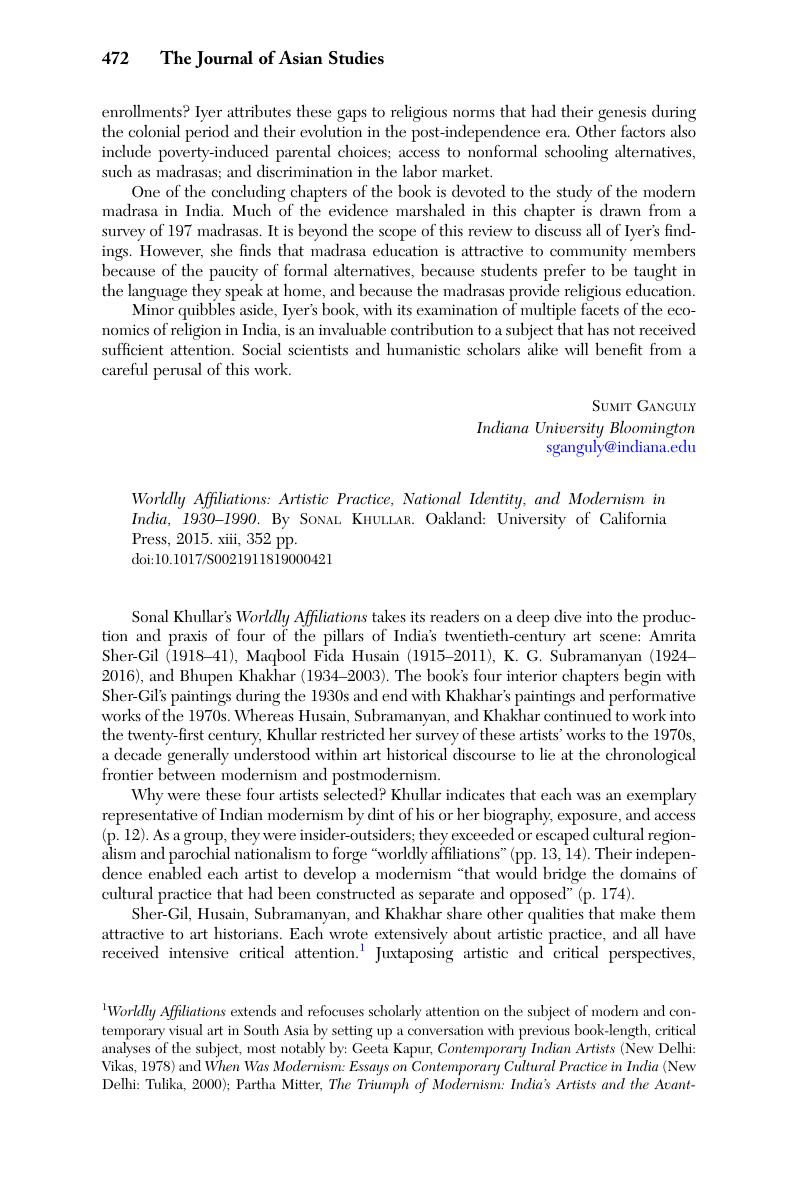No CrossRef data available.
Article contents
Worldly Affiliations: Artistic Practice, National Identity, and Modernism in India, 1930–1990. By Sonal Khullar. Oakland: University of California Press, 2015. xiii, 352 pp.
Review products
Published online by Cambridge University Press: 10 May 2019
Abstract

- Type
- Book Reviews—South Asia
- Information
- Copyright
- Copyright © The Association for Asian Studies, Inc. 2019
References
1 Worldly Affiliations extends and refocuses scholarly attention on the subject of modern and contemporary visual art in South Asia by setting up a conversation with previous book-length, critical analyses of the subject, most notably by: Kapur, Geeta, Contemporary Indian Artists (New Delhi: Vikas, 1978)Google Scholar and When Was Modernism: Essays on Contemporary Cultural Practice in India (New Delhi: Tulika, 2000); Mitter, Partha, The Triumph of Modernism: India's Artists and the Avant-Garde, 1922–1947 (London: Reaktion, 2007)Google Scholar; Brown, Rebecca M., Art for a Modern India, 1947–1980 (Durham, N.C.: Duke University Press, 2009)CrossRefGoogle Scholar; Dadi, Iftikhar, Modernism and the Art of Muslim South Asia (Chapel Hill: University of North Carolina Press, 2010)Google Scholar; Mathur, Saloni, “A Retake of Sher-Gil's Self-Portrait as Tahitian,” Critical Inquiry 37, no. 3 (2011): 515–44CrossRefGoogle Scholar; and Citron, Beth, “Bhupen Khakhar's ‘Pop’ in India, 1970–72,” Art Journal 71, no. 2 (2012): 44–61CrossRefGoogle Scholar. Together, these texts unfold the complexity, depth, and diversity of the subject of South Asian modern and contemporary art while also indexing gaps in the subject matter that hold the potential for additional scholarly research on visual artists, art practices, regional trends, and artistic movements of the twentieth and twenty-first centuries in South Asia.
2 See Geeta Kapur, “Mid-Century Ironies: K.G. Subramanyan,” in When Was Modernism, op. cit. note 1, 87–144.




